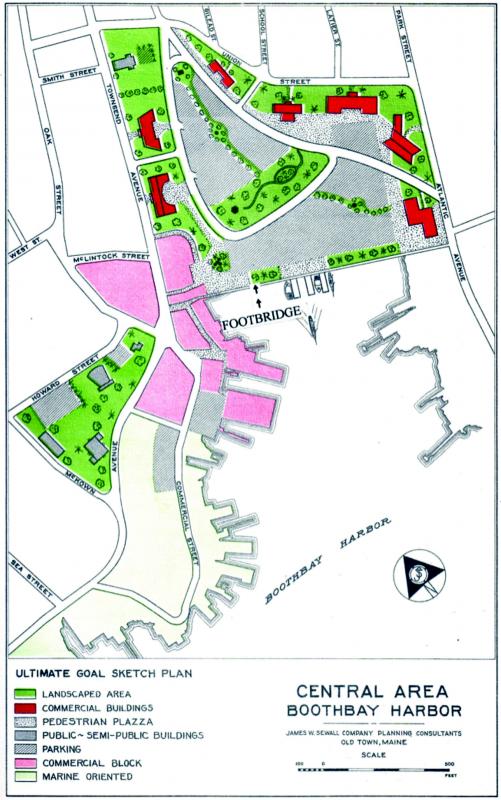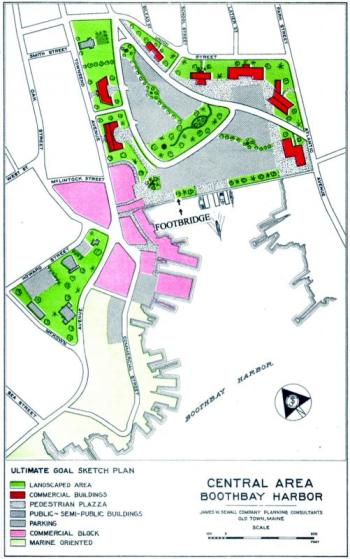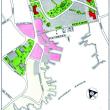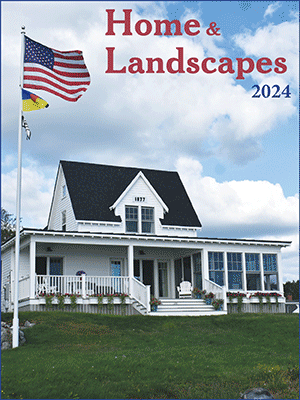The 1961 plan to fill Boothbay Harbor
Right after I spoke at the 1992 dedication of the new Boothbay town office, I went back to helping the town organize the old records brought from the old town office, both in the new vault and up in the new attic.
I partitioned a section of the attic in bays or stalls, marked like a tennis court with boundaries for varieties of old records. Some of the forgotten records gathering dust in the attic were town plans, as many as eight or ten. There were so few they needed no bay, just a shelf. But it represented a lot of effort and tax dollars to perform the studies.
Both the Harbor and Boothbay have hired consultants repeatedly over the years to help plan the future. I think very little usually resulted from the plans; people don't warm up to being managed by consultants. But the pipe dreams of those old times can be fun to read.
The age of diggers
Dump trucks came along almost as soon as motorized vehicles which were fairly numerous here by 1920. Slower to arrive on the scene by a good 30 years were backhoes and bucket loaders. Trucks could carry a whole lot of dirt, but having to load them by hand was a real damper on wholesale dirt moving. I believe Lincoln Giles had the first region backhoe-bucket loader, after World War II, but before 1950. I think it was a Ford.
People were feeling their oats with the advent of such heavy machinery. Think of filling a horse cart or ox cart with a shovel, then think of the men who filled a dump truck by wheeling loads up into it or heaving shovelfuls up into it before backhoes and bucket loaders.
Lincoln's brother Red told me that early dump truck drivers eagerly gave rides to walking men. There'd just be a little stopover during the trip at a gravel pit where the passenger was handed a shovel. You can see people had good reason to mostly leave the now much-abused terrain alone and natural before earth-moving machines.
Usable land has always been augmented by fill, but the amount was limited by the monumental effort of doing it all by hand and with animals. However, by the 1950s moving massive amounts of dirt was becoming routine. Fill was here to stay in a big way. Land greed created visions of dry land, once under water, being above it.
1961 Town Plan
In 1956, the Harbor's town waterfront parking lot went in, filling part of the harbor after a seven-year, hard-fought battle to get townspeople to vote for it. But the parking lot was not the end of Harbor dreams of wholesale filling. The Harbor hired the James W. Sewall Company of Old Town to help the planning board, men now all gone, to chart a “Master Plan” for orderly growth of development and redevelopment, parking, parks, schools and private and public improvements.
The Harbor was purposely created small to isolate a like-minded population that would support modernization and commercialization with votes. In 1889 the leading Harbor men longed to be rid of the ornery, rural Boothbay voters who were so resistant to paying for massive projects that wouldn't benefit them, and they did something about it by setting themselves off from the old town.
The Harbor's about an eighth of Boothbay's size. As a very small town, every bit of its land is especially meaningful. The 1961 planners/consultants saw any land covered shallowly with salt or fresh water as a waste. In their view, swamps and flats were just itching to be dry land.
The centerpiece of their plan was to create the "estimable advantage" of filling much more of the harbor. See the illustration from the 1961 town plan—everything filled between the footbridge and the head of the harbor. The plan for all that made land included about half as park areas to serve as a tourist attraction, and about half as parking for residents and tourists.
A small part was devoted to a new teardrop-shaped road to provide access to the parking and an alternate route between the west side and east side. Also included was a sewage plant on the site of the present waterfront parking lot.
That master plan was voted down at the 1961 town meeting. The planning board was cowed after that defeat for a couple of years, going from a budget of thousands to zero, and many of its members resigning. The DEP and EPA, vigilant to such schemes, were still about 10 years in the future.
Next time: Other elements of the 1961 plan, one of which eventually came to pass.
Event Date
Address
United States

























